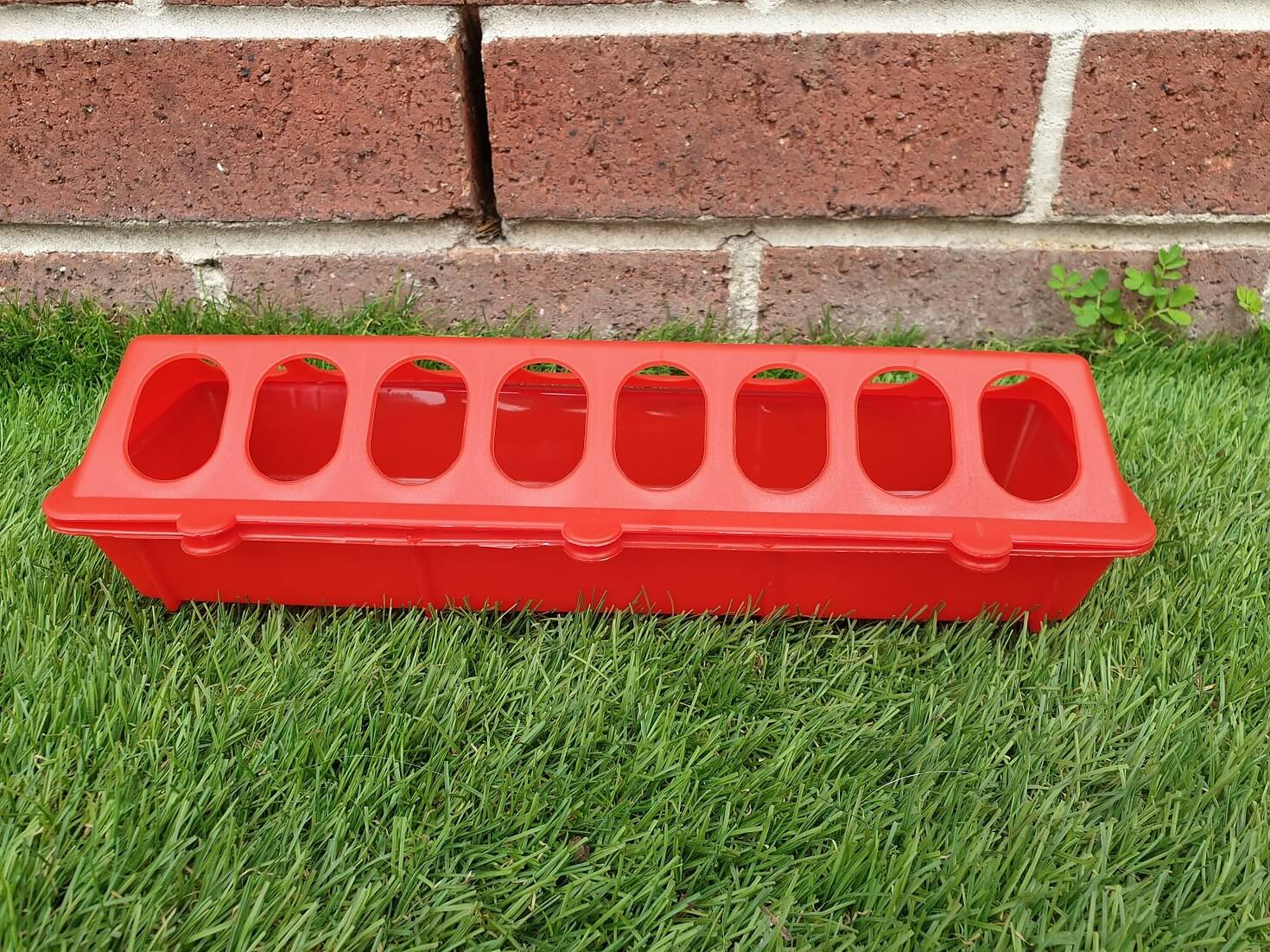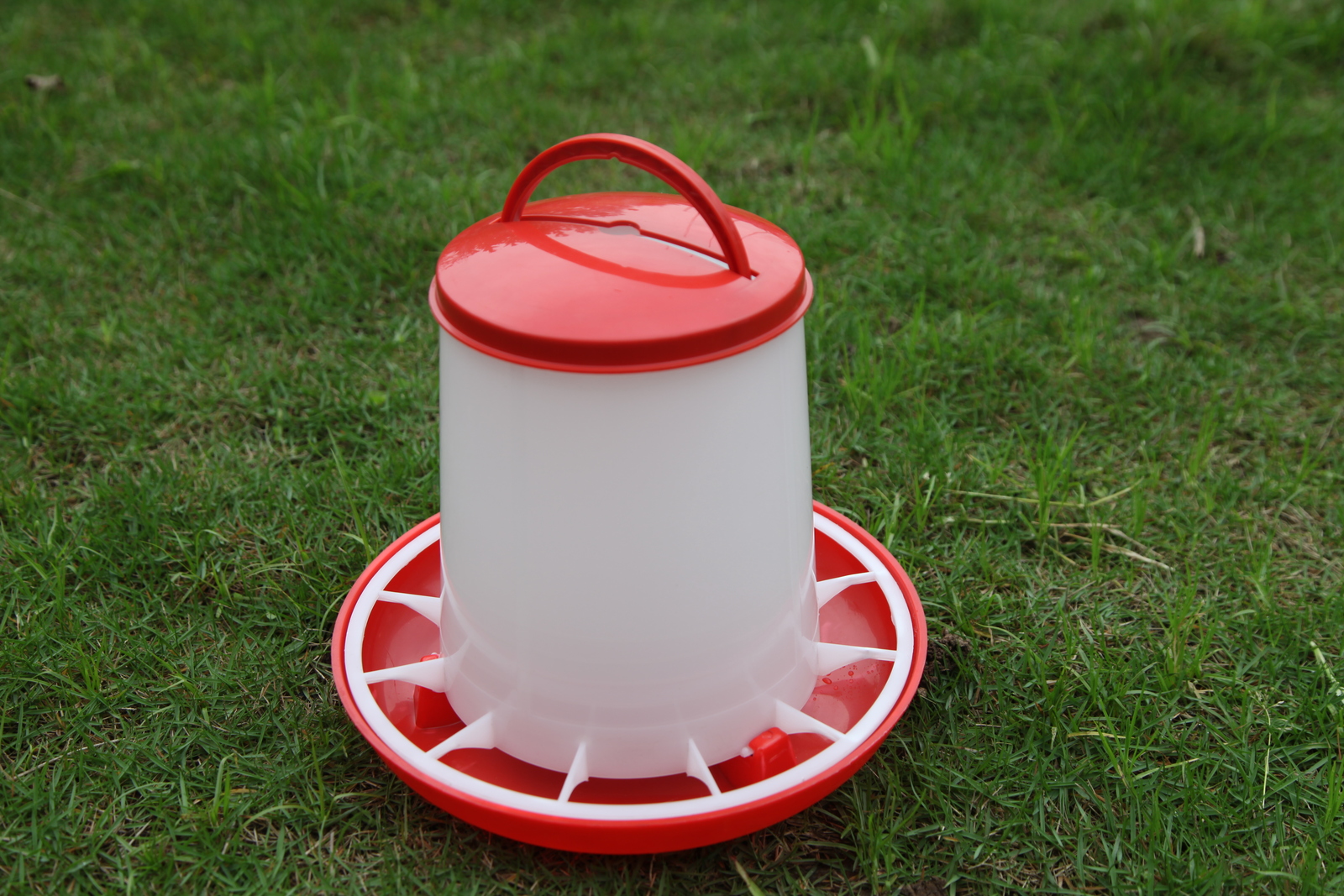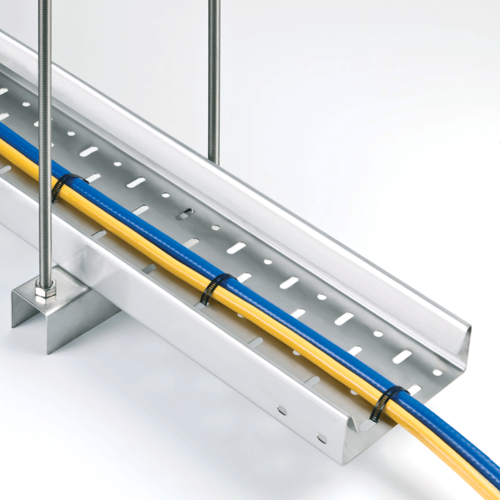Lom
Chirping
Currently we use a few chick feeders (like first pic, but no top) and a few round feeders (the bottom part of something like the second pic here, not the top part since we do fermented feed) to feed our flock, which is okay but still doesn't give enough perimeter space for everyone.


I'd like to have a (or a couple) very long feeders to maximize perimeter space. I've not seen something that exactly fits, certainly nothing marketed as a chicken feeder and nothing else I could repurpose. When we had a hundred or so little chicks I hung an cabling conduit tray (like pic below, except solid without holes on the bottom) in their coop, which worked pretty well, but I wasn't sure what metal it was made of and wasn't sure if consistent exposure to moist food would be a problem (leeching metal into their feed, etc). It might not work as well on the ground, either, as it's not very wide and so it might tip if a few stand on one side.

Anyone care to brainstorm other ideas? Priorities are:
· Long to maximize perimeter space (e.g. a big circular thing like a terracotta saucer isn't ideal)
· Suitable, in a practical and safety sense, for moist feed - so, making one myself out of wood may or may not be a good idea - the porous, hard to clean material might harbor fungus. I don't know if PVC is okay or not as far as leeching undesirable chemicals when exposed (hour after hour, day after day) to moist food.
· Wide enough to be stable - as you know the chick feeders like the first one above are very prone to being tipped over, so it needs to be wide and heavy enough to discourage that. The conduit might work by being heavy enough, or might not.
Anyone seen anything or have a DIY suggestion?


I'd like to have a (or a couple) very long feeders to maximize perimeter space. I've not seen something that exactly fits, certainly nothing marketed as a chicken feeder and nothing else I could repurpose. When we had a hundred or so little chicks I hung an cabling conduit tray (like pic below, except solid without holes on the bottom) in their coop, which worked pretty well, but I wasn't sure what metal it was made of and wasn't sure if consistent exposure to moist food would be a problem (leeching metal into their feed, etc). It might not work as well on the ground, either, as it's not very wide and so it might tip if a few stand on one side.

Anyone care to brainstorm other ideas? Priorities are:
· Long to maximize perimeter space (e.g. a big circular thing like a terracotta saucer isn't ideal)
· Suitable, in a practical and safety sense, for moist feed - so, making one myself out of wood may or may not be a good idea - the porous, hard to clean material might harbor fungus. I don't know if PVC is okay or not as far as leeching undesirable chemicals when exposed (hour after hour, day after day) to moist food.
· Wide enough to be stable - as you know the chick feeders like the first one above are very prone to being tipped over, so it needs to be wide and heavy enough to discourage that. The conduit might work by being heavy enough, or might not.
Anyone seen anything or have a DIY suggestion?

